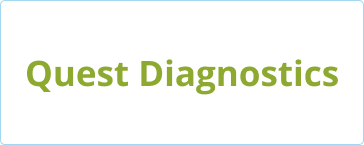X-Ray Forearm AL and Lateral-Right
X-raying Basics
Forearm fractures are the most common limb injury that causes a visit to the emergency department. Forearm fracture risk factors involve osteoporosis (however, this is more common in women than in men) and malignancy, which cause pathological fractures.
Most fractures and dislocations of the radius and ulna (bones of the forearm) usually occur in isolation due to blunt force trauma, affecting other forearm bones. Children's forearm bones (radius and ulna) continue to grow after the healing process and can generally be treated much more differently than adult forearm fractures.
Why Do You Need A Forearm X-ray?
Injuries involving the forearm usually result from secondary trauma in an accident, such as a fall, sports injury, or road accident. It may also result from overuse. These injuries do not always manifest as fractures and include muscle strain and contusion, tendon and nerve damage, and crush injury.
A forearm X-ray can help find causes of symptoms commonly associated with these types of injuries, such as pain, swelling, bruising, and tenderness. Doctors may use a Forearm X-ray to investigate broken bones and the healing process after a bone is set and whether it's aligning correctly.
If a doctor decides to move ahead with surgical treatment, they may require X-rays to plan for surgery and assess the target results of the operation.
A Forearm X-ray is also the primary diagnostic tool in detecting later stages of infection, cysts, tumors, and diseases of the bone of the forearm.
When Do You Need It?
The fractures resulting from injuries may be an incomplete type or complete. Complete fractures may be undisplaced, minimally displaced, or overriding, usually occurring after a significant force injury. There may be nerve involvement with paraesthesia, paresis, or loss of function. Patients and first responders are advised never to probe the fracture region to avoid contamination and further displacement.
Your doctor will request a Forearm X-ray if they suspect the following conditions or need to treat for the following indications:
● Falls
● Sports injuries
● Significant trauma
● Child abuse is most commonly physically observed as forearm injury
● Severe pain, which might increase with movement.
● Swelling at the site of injury
● Inability and discomfort while bending or moving your arm
● bruising at the site of fracture
● Obvious deformities, such as a bent or floppy arm
How Do You Need To Prepare?
There is no special preparation required for a Forearm X-ray; however, keep the following points in mind before your appointment:
● If there are chances you might be pregnant, inform your physician and radiologist to discuss the exposure limit for the developing fetus.
● Remove any jewelry or metal objects that might distort the radiographic image.
● Consult the X-ray technician if you wear any on-body devices such as an insulin pump or have metal implants from prior surgeries
● You may be asked to change into the hospital gown for the imaging at the time of the scan.
What Can You Expect?
X-raying is a routine, painless procedure that uses radiation to image anatomy. The technician will take two X-rays (from the front and side) and return to reposition the arm once a side is done.
The patient will be positioned on an X-ray table that carefully places the forearm with the elbow joint in its natural position to assess suspected fractures within the forearm. The technician will cover all other body parts from unnecessary radiation and step behind a wall to operate the X-ray machine.
In most cases, when an X-ray is performed to determine injury, the technician takes special care (splint, brace) to prevent further damage.
You will be asked to hold a particular position for a few seconds without moving while the image is being made. The stances required for the X-rays may feel uncomfortable, but they need to be held for only a few seconds. If the technician feels the radiographs obtained are blurry, they will redo the procedure.
What Do Your Results Mean?
A radiologist will study your X-rays and send a detailed report to your surgeon, who will discuss the results and explain what it means.
The prognosis for most arm fractures is excellent if treated early. The patient will need operative treatment with internal fixation or intramedullary nailing in nearly all cases, so prompt treatment is advised.
Related X rays:
Frequently ordered together
X-Ray Forearm AL & Lateral
X-Ray ARM INFANT
X-Ray ARM INFANT-Right
X-Ray ARM INFANT-Left
X-Ray Forearm
X-Ray Forearm-Right
X-Ray Forearm-Left
X-Ray Forearm AL and Lateral-Left
X-Ray Forearm AL and Lateral-Right
150.00$
150.00$
65.00$
65.00$
150.00$
65.00$
65.00$
150.00$
150.00$















